Volcano in the Philippines starts spewing a huge ash plume as locals flee imminent massive eruption
►A dangerous eruption is expected from the most active volcano in Philippines
►A recent eruption from the volcano saw 'day turn to night' as ash filled the sky
►Tens of thousands of local people are displaced after fleeing their homes
↓↓↓
An erupting volcano in the Philippines could become deadly - as the explosions from the mountain continue to grow.
On Monday day turned to night following an eruption from the Mayon volcano - as a giant mushroom cloud shot up from the mountain filling the sky with ash.
'Hazardous eruption imminent,' the state volcanology agency concluded in its latest bulletin, saying Mayon volcano could blow up within days after two weeks of activity.
Fine ash and sand fell on Legazpi, a city of about 200,000 people, and nearby areas after the midday explosion.
Motorists had to switch on their lights and use windscreen wipers against the ash.
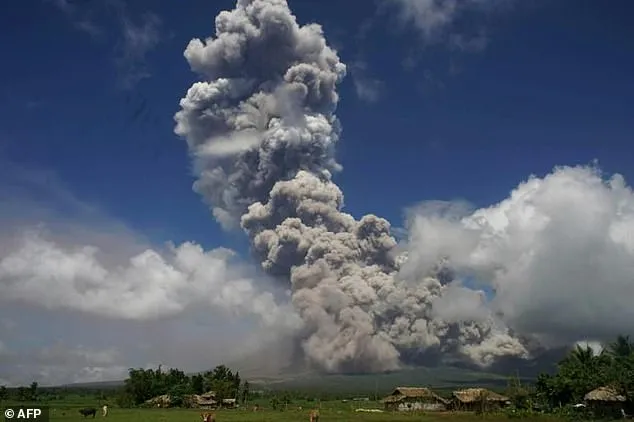
A giant mushroom-shaped cloud rises into the air from Mayon volcano - as experts predict a dangerous eruption
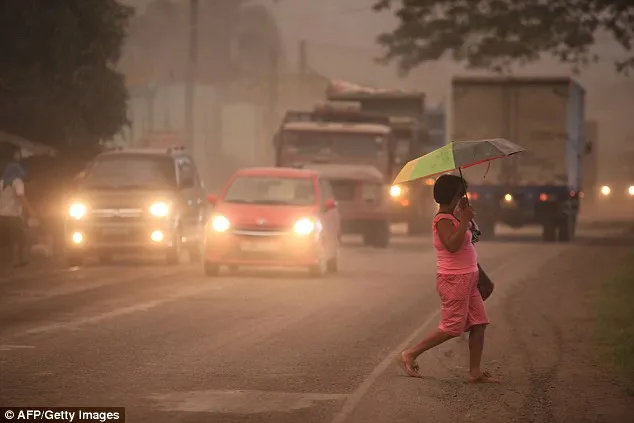
Motorists had to switch on their lights and use windscreen wipers
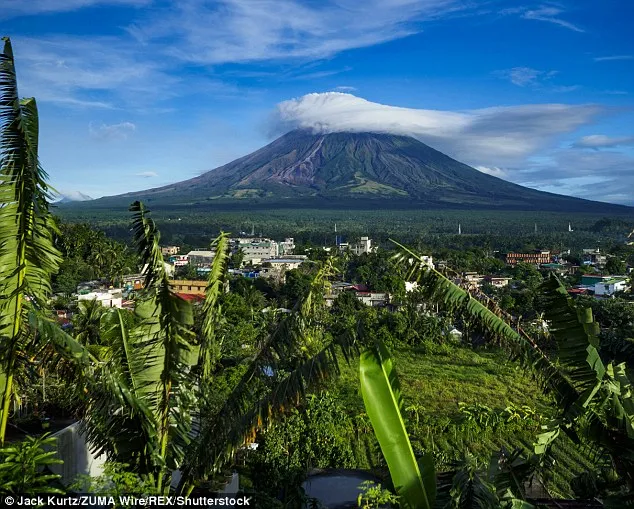
Fine ash and sand fell on Legazpi, a city of about 200,000 people, and nearby areas after the midday explosion turned the area into virtual nighttime
↓↓↓
The ash column rose several kilometres above the volcano, blotting out the sun in a largely agricultural region some 330 kilometres (205 miles) southeast of Manila.
'I had to stop because my helmet had filled up with ash,' local housewife Girlie Panesa, 39, told AFP as she parked her motorcycle by the roadside in the nearby town of Ligao.
'We expect the explosions to continue,' Philippine Institute of Volcanology and Seismology director Renato Solidum told a news conference in Manila.
'There is a possibility of a dangerous eruption, the start of which we are already witnessing,' Solidum added.
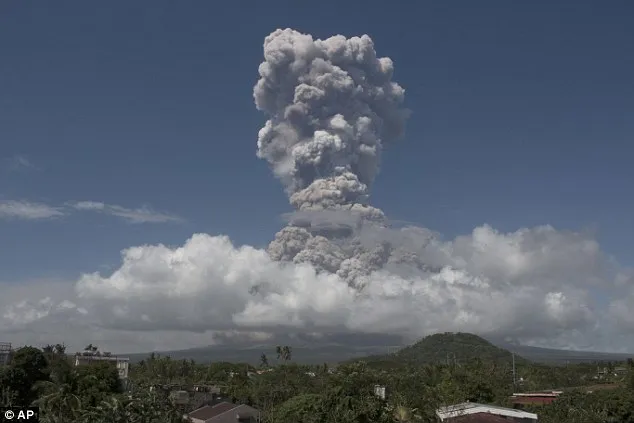
'Hazardous eruption imminent,' the state volcanology agency concluded in its latest bulletin, saying Mayon volcano could blow up within days after two weeks of activity
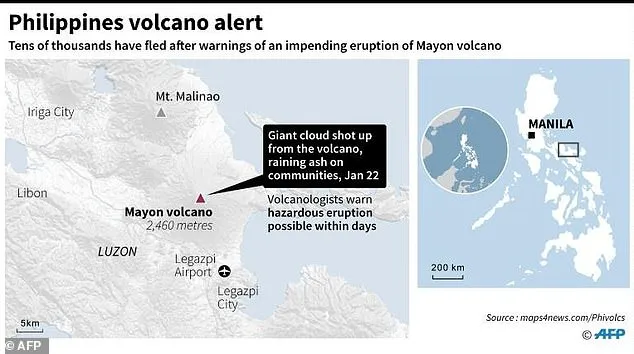
'We expect the explosions to continue,' Philippine Institute of Volcanology and Seismology director Renato Solidum told a news conference in Manila

The Civil Aviation Authority of the Philippines (CAAP) said it shut down Legazpi airport until further notice

More than 40,000 people had fled in the past week, the civil defence office in Manila said Monday
↓↓↓
Solidum advised local officials to evacuate more areas around the crater, expanding the danger zone from six kilometres to eight kilometres.
He also warned aircraft to steer clear of the area due to the danger of jet engines sucking in ash which could gum up turbines, potentially causing a catastrophic crash.
The Civil Aviation Authority of the Philippines (CAAP) said it shut down Legazpi airport until further notice, disrupting several domestic flights, while warning off other aircraft from the region.
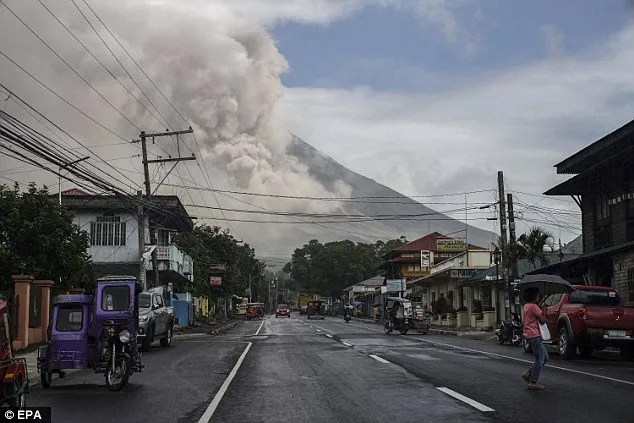
Solidum said superheated volcanic rocks and ash rolled down the volcano's flanks while the ash column was shooting up, threatening surrounding communities
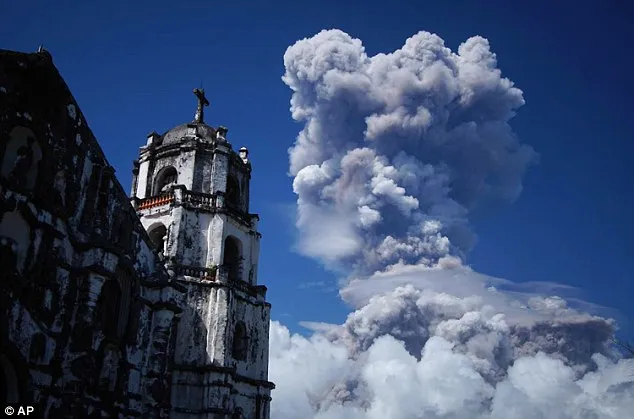
More than 40,000 people had fled in the past week, the civil defence office in Manila said Monday
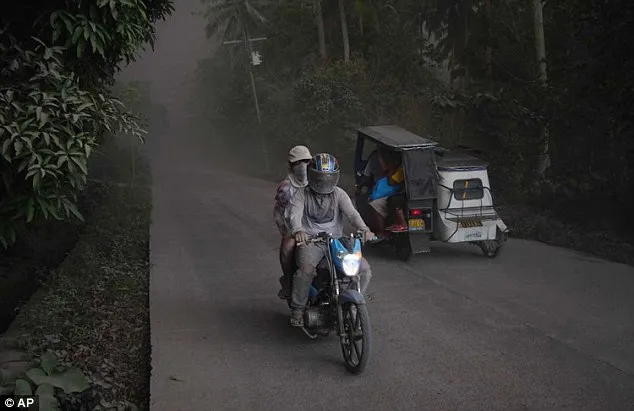
Mayon, a near-perfect cone, rises 2,460 metres (8,070 feet) and is considered the most volatile of the country's 22 active volcanoes
↓↓↓
'CAAP advised pilots flying near the area to exercise extreme caution, as ash from volcanic eruption can be hazardous to the aircraft,' it said in an advisory.
More than 40,000 people had fled in the past week, according to the civil defence office in Manila.
Solidum said superheated volcanic rocks and ash rolled down the volcano's flanks while the ash column was shooting up, threatening surrounding communities.
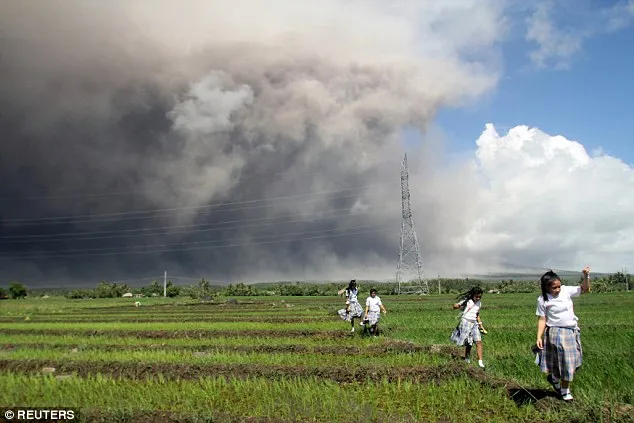
The Philippines is part of the Pacific 'Ring of Fire' of islands that were formed by volcanic activity

The Philippines is part of the Pacific 'Ring of Fire' of islands that were formed by volcanic activity
↓↓↓
Mayon, a near-perfect cone, rises 2,460 metres (8,070 feet) and is considered the most volatile of the country's 22 active volcanoes.
There have been 51 previous eruptions in recorded history, the last one in 2014. In 1814 it buried the town of Cagsawa, killing more than 1,000 people.
The Philippines is part of the Pacific 'Ring of Fire' of islands that were formed by volcanic activity.
The most powerful explosion in recent years was the 1991 eruption of Mount Pinatubo, about 100 kilometres northwest of Manila, which killed more than 800 people.

There have been 51 previous eruptions in recorded history, the last one in 2014. In 1814 it buried the town of Cagsawa, killing more than 1,000 people